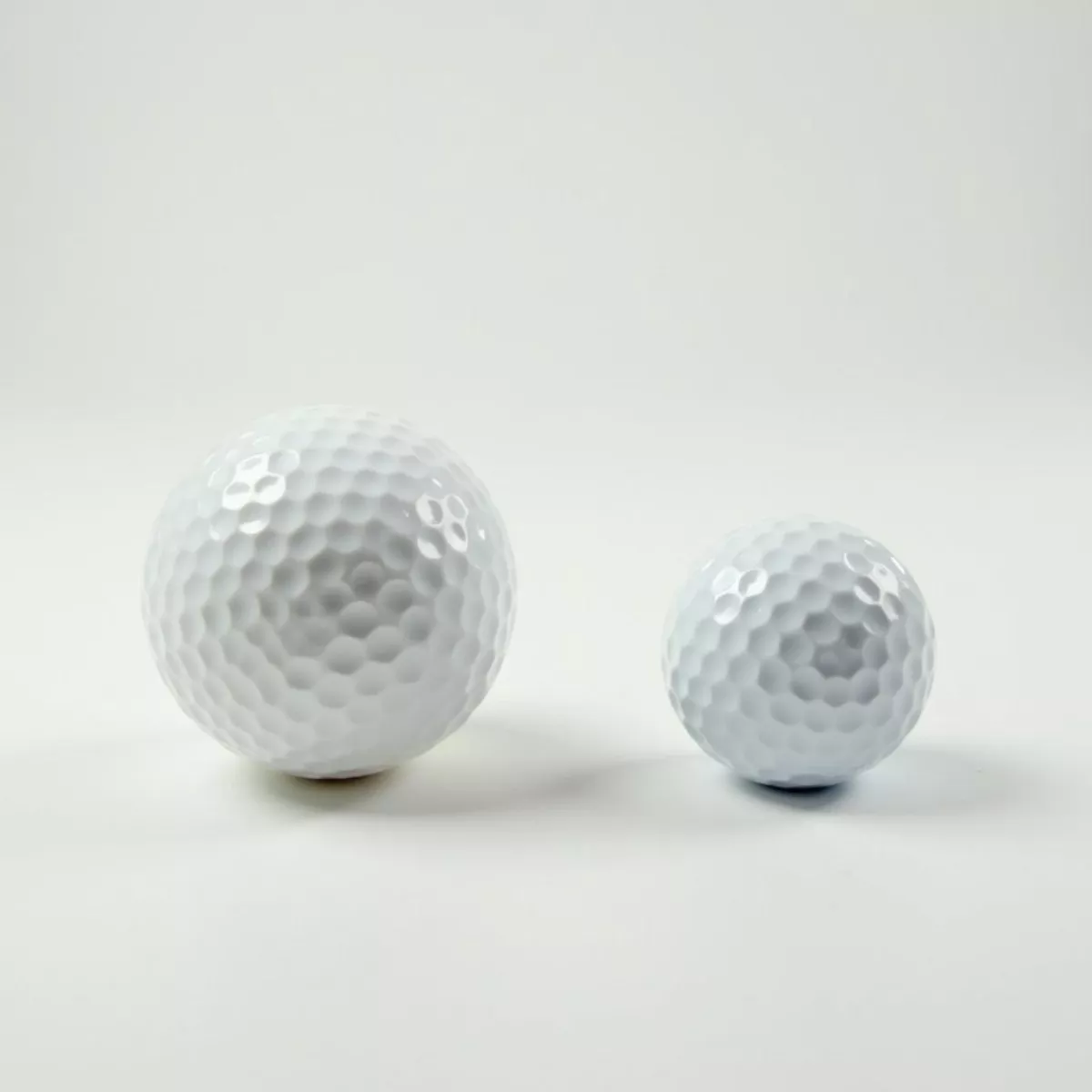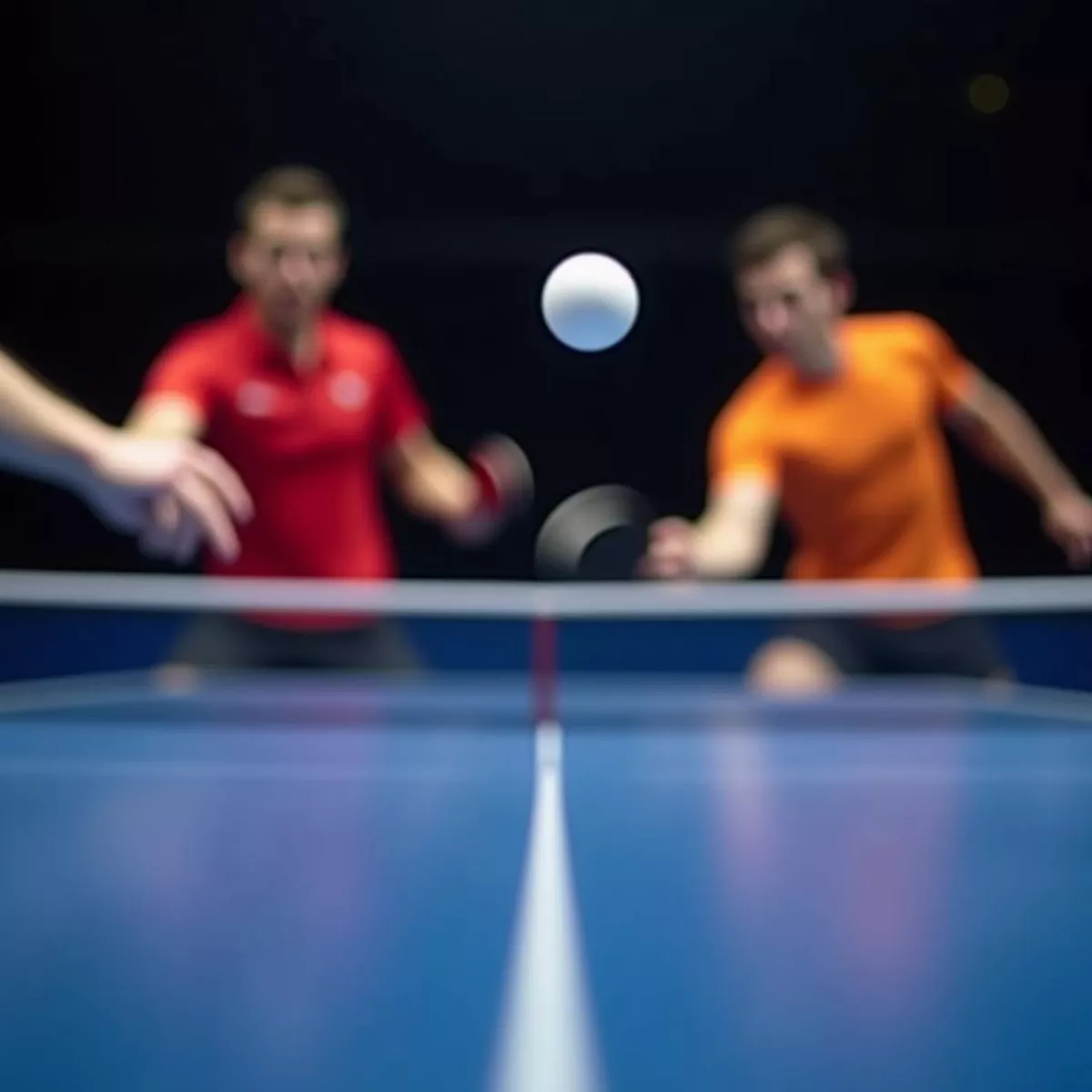When you think of ping pong balls and golf balls, it’s easy to imagine that they’re similar because they’re both small, round, and used in games. However, if you dig a bit deeper, you’ll discover fascinating differences in their sizes, materials, and uses. This guide will walk you through the key differences between these two seemingly simple spheres, helping enhance your understanding of their respective roles.
Let’s dive in!
Dimensions: The Size Factor
Ping Pong Ball Dimensions
Ping pong balls, commonly known as table tennis balls, have specific regulations set by the International Table Tennis Federation (ITTF). Here’s a breakdown of their dimensions:
- Diameter: 40 millimeters (mm) or 1.57 inches.
- Weight: 2.7 grams (g) or 0.095 ounces.
Golf Ball Dimensions
Golf balls, on the other hand, have their own set of regulations defined by the United States Golf Association (USGA). Here are the specifications:
- Diameter: 42.67 mm or 1.68 inches.
- Weight: 45.93 g or 1.620 ounces.
To illustrate the comparative sizes clearly, here’s a side-by-side comparison table:
| Feature | Ping Pong Ball | Golf Ball |
|---|---|---|
| Diameter | 40 mm (1.57 in) | 42.67 mm (1.68 in) |
| Weight | 2.7 g (0.095 oz) | 45.93 g (1.620 oz) |
| Standard Use | Table Tennis | Golf |
As you can see, while the diameter difference is subtle, the weight is significantly varied. The golf ball is nearly 17 times heavier than the ping pong ball!
 Ping pong ball and golf ball size comparison
Ping pong ball and golf ball size comparison
Materials and Construction
Both ping pong balls and golf balls are made from different materials, which affect their performance.
Ping Pong Ball Materials
Ping pong balls are typically made from plastic, specifically a type known as celluloid, or its modern alternative, polypropylene. The lightweight nature of these materials allows for easy manipulation and quick responses during play. The smooth plastic surface allows for enhanced spins and bounces, essential for competitive table tennis.
Golf Ball Materials
Golf balls generally consist of a core and cover. The core is usually made from rubber, while the outer cover might be made from a variety of materials, including urethane or surlyn. The multilayer construction allows for different performance features—such as distance or spin. Golf balls are engineered for aerodynamics, with dimples that help improve flight and control.
Performance Differences
The size and material differences lead to distinct performance characteristics in each sport.
Ping Pong Ball Performance
- Speed: Ping pong balls are lightweight and can be hit at great speeds, allowing for a fast-paced game.
- Control: The light weight provides players with the ability to apply various spins.
- Durability: While they can withstand considerable punches, they can lose shape or dent if not handled correctly.
Golf Ball Performance
- Distance: The heavier construction allows golf balls to travel farther when struck accurately.
- Control: Players can control how the ball lands and spins based on the type of ball they choose.
- Durability: Golf balls are built to last, often designed to resist cuts and scuffs from both club and environmental conditions.
 Professional table tennis match
Professional table tennis match
The Role in Sports
Both ping pong and golf not only provide athletic competition but also enjoy global popularity.
Ping Pong
- History: Originated in the late 19th century and has evolved into an Olympic sport.
- Play Style: Offers a fast-paced, strategic gameplay that often requires quick reflexes.
Golf
- History: Golf dates back to the 15th century in Scotland and has become a staple in leisurely and competitive sports.
- Play Style: Focuses more on precision and technique, with various courses designed to challenge players at different skill levels.
Fun Facts About Each Ball
- Ping Pong Ball:
- The ITTF uses orange and white colors for official balls.
- A ping pong ball can bounce more than a meter high when dropped from the same height.
- Golf Ball:
- The average golf ball has around 336 dimples.
- Golf balls have been found to travel longer distances when struck in a well-conditioned environment.
Key Takeaways
- Both ping pong balls and golf balls serve unique purposes but differ significantly in size, weight, materials, and gameplay dynamics.
- Ping pong balls measure 40 mm in diameter and weigh 2.7 g, whereas golf balls are 42.67 mm and weigh about 45.93 g.
- Understanding these differences can enhance your appreciation for each sport and the equipment used.
FAQ Section
1. What are the primary materials used in ping pong and golf balls?
- Ping pong balls are mainly made of plastic, while golf balls typically consist of a rubber core covered by urethane or surlyn.
2. How do the weights compare between the two types of balls?
- A golf ball is significantly heavier, weighing approximately 16 times more than a ping pong ball.
3. Can you use a golf ball for table tennis?
- No, the differences in size and weight mean golf balls are not suitable for use in ping pong.
4. How do ball sizes affect gameplay?
- Ping pong requires rapid reflexes due to its lightweight characteristics, while golf focuses on precision and distance with a heavier ball.
5. Do the colors of the balls matter in competition?
- Yes, ping pong balls are typically orange or white for visibility, while golf balls come in various colors for style but must adhere to regulations.
6. Does the design of the golf ball impact its flight?
- Yes, the dimples on a golf ball improve aerodynamics and influence its trajectory and distance.
7. Are there different types of ping pong balls?
- Yes, there are different types based on quality—like practice balls, competition-grade balls, and balls for recreational play.
8. Can weather conditions affect gameplay for either sport?
- Yes, moisture or wind can significantly impact the dynamics of golf balls; in contrast, table tennis is generally played indoors.
9. How has technology impacted the design of these balls?
- Advances in materials and design enhance performance, allowing both balls to cater to the evolving demands of athletes.
10. Is there an age limit for playing these sports with respective balls?
- No, both ping pong and golf can be enjoyed at any age, making them accessible for everyone!
By understanding the differences between ping pong balls and golf balls, you not only enhance your knowledge of these sports but also improve your gameplay appreciation. Grab a ball—whichever you prefer—and enjoy some games or practice your skills!